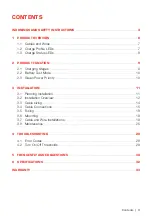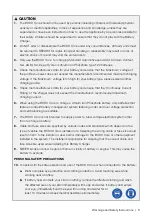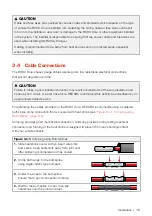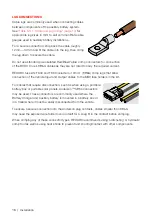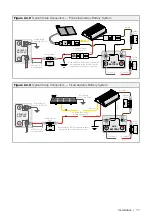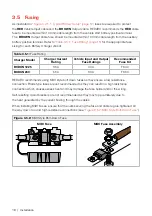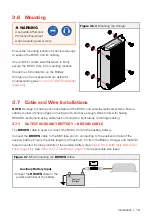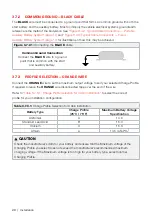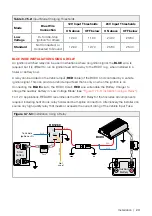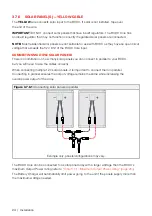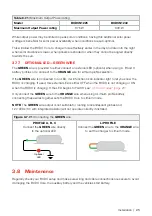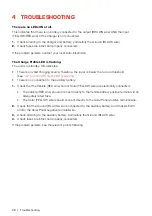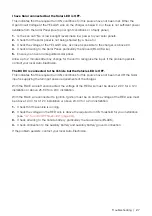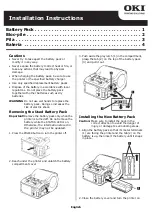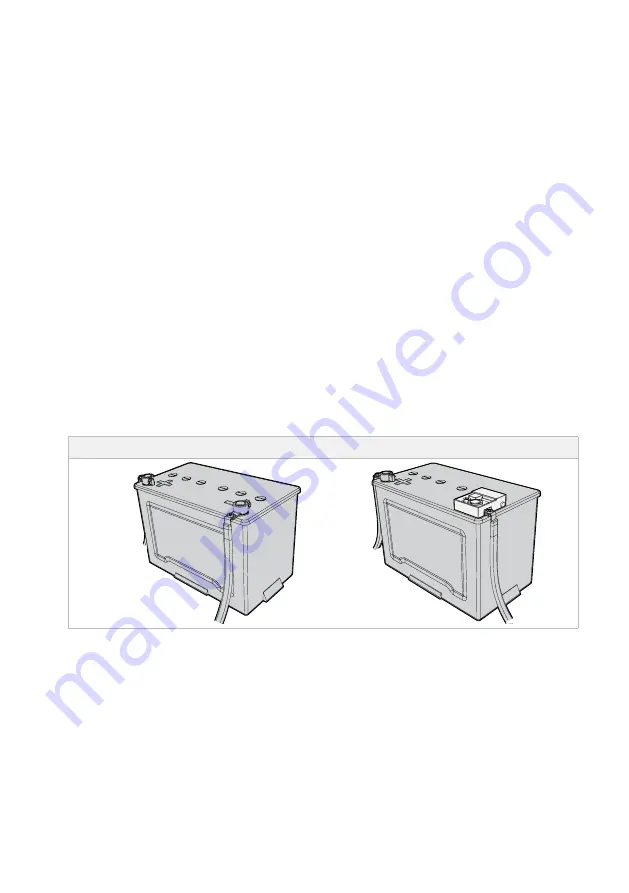
Installation | 13
3.2.2 CONSIDERATIONS PRIOR TO INSTALLATION
1. Auxiliary Battery Profile Selection
—
Determine the chemistry of your auxiliary battery prior
to install as this will influence the connection of the
ORANGE
wire that is used to set the charge
profile of the BCDC Core (see
"3.7.3 Profile Selection — Orange Wire" (page 20)
).
2. Fixed or Removable —
Determine if your install requires connections to be permanent or
easily disconnected. This influences the connector choice as soldered butt splice connectors
are more suitable for fixed wiring while Anderson plugs are more suitable when disconnection is
required, such as with portable battery boxes, trailers and portable solar panels (see
).
3. Solar Panel Selection —
Consider if your auxiliary battery system will have permanently wired
solar panels connected or portable panels such as a solar blanket. This influences wiring and
connector choice. Ensure the panel is 12 V nominal and does not have a built in solar regulator.
4. Vehicle Alternator Type —
Determine if your vehicle has a variable-voltage or idle-stop
alternator (smart alternator) these types of alternators require the
BLUE
wire connection for the
BCDC Core to function correctly (see
"3.7.5 Vehicle Ignition Input — Blue Wire" (page 22)
Smart alternators are common on vehicles manufactured from 2015 onwards that are compliant
with Euro 6 emissions regulations. Determine if your vehicle has a smart alternator by checking
for a battery sensor on your vehicles start battery as illustrated in
Alternator vs Variable Voltage Alternator" (page 13)
.
Older vehicles or other models with fixed
voltage or temperature compensating alternators do not require the
BLUE
wire connection.
Figure 3.2.2.1:
Standard Alternator vs Variable Voltage Alternator
Regular Battery Terminal
(Standard Alternator)
Battery Terminal with Sensor
(Variable Voltage Alternator)
5. Cable Length and Gauge —
Determine the length of cable required to connect BCDC Core to
the vehicle start battery and solar panels in your application. This influences the gauge of wire
required. See
to determine appropriate cable gauge suitable for
your installation. Note that B&S (Brown & Sharpe), AWG (American Wiring Gauge), GA (Gauge)
are interchangeable terms for measuring wiring diameter (e.g 8 B&S = 8 AWG = 8 GA)
6. Common Ground —
Before planning wiring, consider that the BCDC Core, auxiliary battery,
start battery and solar panel/s must all share a common electrical ground to correctly charge
from both inputs. This is typically achieved by connecting all grounds to the vehicle body.
7. Auxiliary Battery Load Current —
Before wiring the auxiliary battery system, determine the
loads to be powered and the total current to be drawn from the battery. This affects the load
cable gauge and load fuse rating.
Summary of Contents for BCDCN1225
Page 34: ...34 NOTES ...
Page 35: ...35 ...



